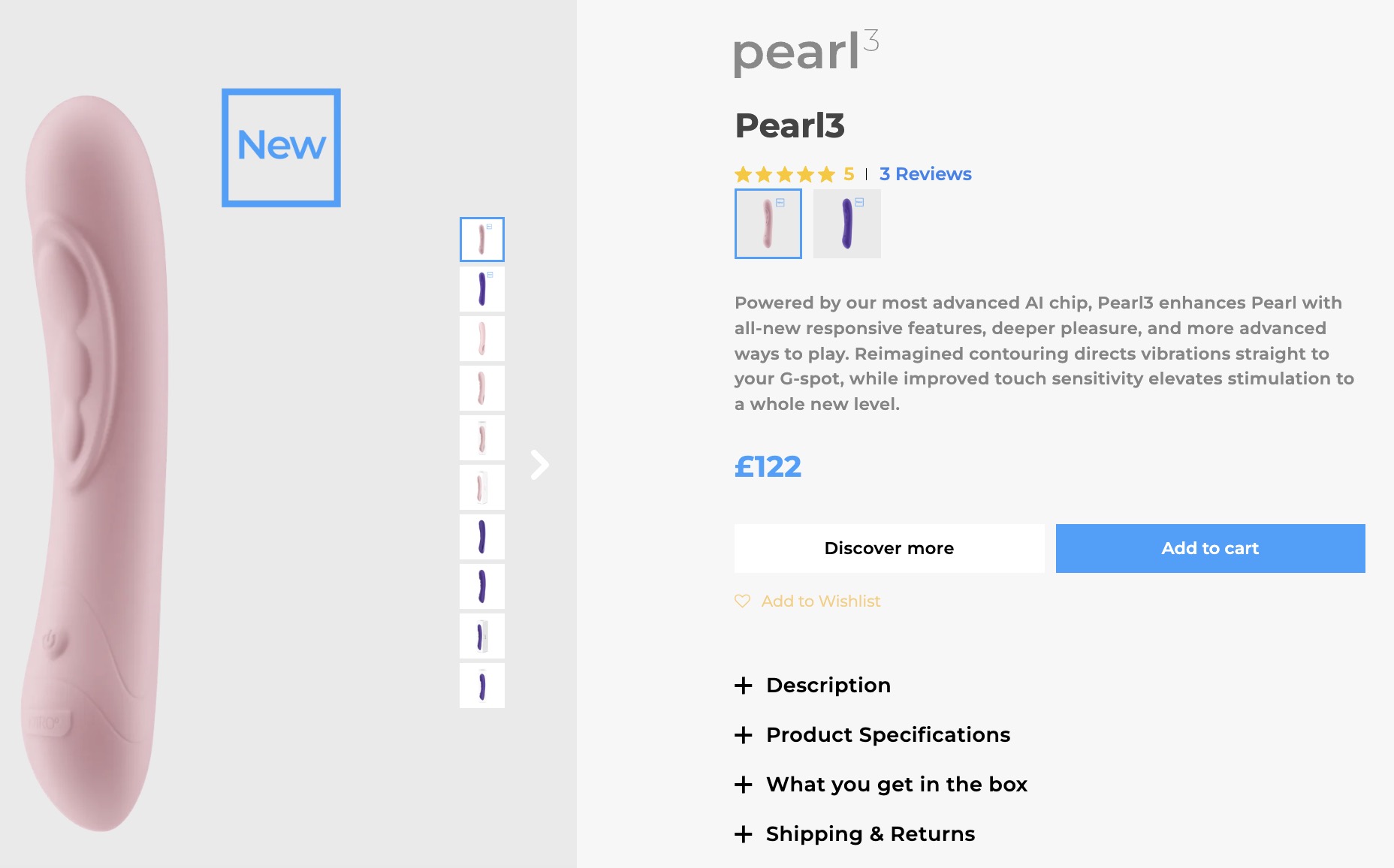Introduction to Best Dildo Materials
Choosing the perfect dildo material is vital to ensure both safety and pleasure. Here’s a guide to the most popular materials used in dildo manufacturing:
- Silicone – a synthetic elastomer with a soft and flexible texture, mimicking real skin. Pros: Durable, hypoallergenic, non-porous, versatile, easy to clean. Cons: Expensive, can react with silicone-based lubes.
- Rubber/Latex – natural or synthetic material, offering firmness and flexibility. Pros: Affordable, realistic feel. Cons: Porous, may contain phthalates and toxins, causing allergies and infections.
- Glass – toughened glass shaped into dildos with a sleek finish. Pros: Body-safe, hygienic, heats up or cools down for added sensation. Cons: Fragile, expensive.
- Steel – stainless steel, polished to a mirror finish. Pros: Hypoallergenic, cool or warm sensations, non-porous, safe to share with partners. Cons: Heavy, expensive.
When it comes to safety and longevity, silicone and steel are the top choices. A study by Indiana University showed that more than half of women surveyed owned at least one sex toy. Selecting the right dildo material is essential, because it can make or break your experience.
Factors to Consider in Choosing the Best Dildo Material
To ensure you get the best experience from your dildo, this section delves into the factors to consider when choosing the best dildo material with a focus on safety and material composition, texture and sensation, and sustainability and durability. Discover the sub-sections and the solutions they offer to help you make an informed choice.
Safety and Material Composition
Picking a dildo material is key for your wellbeing and coziness. The quality of the material is essential to take into account when doing your purchase, as cheaper materials could result in adverse health issues. See the table below for the different kinds of dildo materials and their properties:
| Materials | Properties |
|---|---|
| Silicone | Non-porous, hygienic, hypoallergenic, waterproof, easy to clean, high-quality feel, can be sterilized with boiling water |
| Glass | Smooth surface for simple penetration, non-porous for hygiene purposes, temperature-sensitive for added stimulation |
| Metal | Hygienic, durable and heavy weight for extra pleasure stimulation |
| PVC | Affordable and skin-like texture making it feel more realistic than other dildos |
Remember that certain composition could be hazardous to your health. For instance, dildo materials containing phthalates have been linked to hormonal imbalances and long-term reproductive damage. Opt for silicone or glass over jelly or rubber materials made from risky chemicals like phthalate.
In 2016, Lloyds Pharmacy UK surveyed 2000 people and found out that only two-thirds of them clean their sex toys before using. Choosing the right textured dildo can make all the difference in your solo play or partnered escapades – it’s like finding the ideal sidekick for your orgasm.
Texture and Sensation
The texture and sensation of a dildo are essential for your sexual experience. Consider the material before buying it to determine if it’s suitable. Firmness, flexibility, and roughness or smoothness can affect pleasure.
Silicone dildos are popular. They have a skin-like texture, are firm but flexible, and retain warmth. Glass dildos are firmer but still glide smoothly, giving a unique sensation. Metal dildos have weightiness and hardness. They quickly pick up heat or cold. TPE/TPR and jelly-like materials are softer for a lifelike feel and are bendable.
Test the texture first-hand to decide if it’s right for you. A friend didn’t do this and bought a rigid toy that caused discomfort. She should have tried different materials instead of just browsing online. If your dildo lasts longer than your relationship, opt for a more sustainable material.
Sustainability and Durability
Sustainability and durability are key when selecting the perfect dildo material. Sustainable materials make sure you can enjoy pleasure without harming the environment. Durable dildos also offer pleasure for a long time. Silicone and glass dildos are great as they are recyclable and long-lasting. Wooden dildos are eco-friendly, but may not last as long as silicone or glass.
It’s essential to think about the type of lube you plan on using with your dildo. Oil-based lubes break down latex dildos faster than water-based ones. Plus, some silicone lubricants can react negatively with silicone dildos, causing it to degrade.
Lovecraft.bio makes dildos from mushrooms, giving an eco-friendly alternative to typical sex toys. Mushroom dildos may not be the most durable, but they are recyclable, and help to reduce landfill waste.
The Guardian states that “the global market size of sex toys is expected to grow from $23bn in 2019 to $37bn by 2027.” As more people buy sex toys, it’s important to invest in sustainable and long-lasting materials like silicone or glass to lower environmental effects. Let’s get to the facts about the best dildo materials – no one wants a flaccid toy!
Best Dildo Materials
To choose the best dildo materials, you need to know which materials offer the most satisfying experience for your needs. In order to make the right choice, this section explores the different dildo materials and their features. Read on to learn about Silicone, Glass, Stainless Steel, Wood, and Ceramic materials without wasting your time in research.
Silicone
Silicone dildos come in a range of densities – from soft to firm. Some users like the softer feel, while others prefer firmness for added stimulation. It can also retain heat, so it can be warmed up before use.
Surprisingly, silicone was first used in medical devices in the 1940s, and only in sex toys from the 1970s. Now, it is one of the most popular materials!
Glass dildos show that sometimes, being a little rough can be just as enjoyable.
Pros:
- non-porous
- smooth texture
- easy to clean
- durable
Cons:
- more expensive
- can’t be used with silicone-based lubes
- needs careful storage away from other materials
- can be too rigid for some users
Glass
Glass dildos are popular among sex toy enthusiasts. They come in many styles, colors, and textures, so it’s easy to find one for you.
Sarah shared her experience with using a glass dildo during solo play. She said, “The smoothness and weight were great. I could feel every inch of it. Much better than other toys I’ve used!”
Glass dildos make for a luxurious addition to any collection. Who needs a knight when you can have a stainless steel dildo?
Stainless Steel
Stainless Steel Dildos have many advantages:
- Durability – highly durable, resistant to scratches and cracks
- Temperature play – holds hot and cold temperatures
- Hygiene – non-porous and easy to clean or disinfect
- Designs and shapes – easily molded into different textures
- Cost – although pricey, it’s worth it
- Discretion – it looks like an ornament! Plus, it has a unique weighty feel that can be stimulating for intense sensations
Upgrade your collection with Stainless Steel Dildos today – looks like Pinocchio’s nose isn’t the only thing that grows with wood!
Wood
Wooden dildos have been around since ancient times, providing a unique texture with their natural grains. But when it comes to hygiene, there’s a few things to consider. Pros include natural look and feel, sustainability, and durability – if properly cared for. Cons include porous material that can harbor bacteria, extra maintenance/cleaning needs, and potential splinters or rough spots. Shared use without proper sterilization is not recommended. Customization options may be available such as engravings or different types of wood. For a different kind of pleasure, ceramic dildos may be hard, but not cold.
Ceramic
Ceramic dildos provide unique sensations! Its smooth texture is a standout feature. Plus, it’s durable, long-lasting and hypoallergenic.
Try it today for a tantalizingly different experience!
But remember, silicone is safe, glass is classy, and jelly isn’t for everyone.
Pros and Cons of Different Dildo Materials
To understand the pros and cons of different dildo materials, explore silicone, glass, stainless steel, wood, and ceramic options. Each material has unique qualities that affect pleasure and safety during use. Consider which material is right for you by examining factors like texture, temperature, and ease of cleaning.
Silicone
Pros and cons of silicone dildos are summarized below:
| Pros | Cons |
|---|---|
| Body-safe | Expensive |
| Easy to clean | Not compatible with silicone-based lubricants |
| Durable | Attracts dust and lint |
| Non-porous | Firmness may not suit everyone’s preference |
Also, silicone dildos come in many shapes, sizes, and colors. Compatible with only water-based lubricants, which are widely available.
To get the most out of your silicone dildo:
- Wash it before & after use with mild soap & water.
- Keep away from sunlight to avoid degrading the material.
- Store in dry place away from other materials.
By following these tips, you can ensure your silicone dildo lasts longer & keep yourself safe from infection or bacterial growth.
For a classy experience, try glass dildos – no risk of breaking anything pricey!
Glass
Glass dildos have pros and cons. Pros include being shatterproof, hypoallergenic, and easy to clean. Cons include weight and the risk of injury if mishandled. They are also more expensive than others.
These toys can be used with any type of lubricant. That’s great for experimenting. Plus, they look awesome. But, if dropped on a hard surface, they can shatter. And, they are heavier than other materials, which can lead to fatigue if used for too long.
If you want to add some variety to your toy collection, try a glass dildo today! Plus, it can double as a weapon during a zombie apocalypse.
Stainless Steel
Stainless steel is a popular dildo material for those seeking a firm, weighty sensation. It’s non-porous, making cleaning a breeze – perfect for hygiene-conscious folks! Pros include its durability and long-lasting nature. Plus, it can be used for temperature play. Cons include being colder to the touch than other materials and slightly pricier than other options.
One unique detail? Stainless steel dildos can be easily sterilized by boiling or in the dishwasher – ideal for multiple partners! A friend of mine recently gave stainless steel a try and found it intense and full-filling during solo play. Another eco-friendly option: wooden dildos – pleasure-inducing and good for the environment!
Wood
Wood dildos can be a unique and eco-conscious option. They are smooth and polished, with variations in wood grains and colors. However, they require proper maintenance to avoid bacteria growth. Clean up fluids and store in a dry place away from sunlight and heat. You can also use protective coatings like beeswax or oil for extra shelf life. If you want to avoid plastic or silicone, wood dildos might be your perfect sensual partner!
Ceramic dildos, however, may not be ideal for clumsy users.
Ceramic
Ceramic dildos bring a unique spin to pleasure-seeking. They have long-lasting durability, but may break if dropped. They can hold temp for thrilling sensations, yet are cold at room-temp otherwise. Plus, they have a smooth, firm texture for comfort, though they might be heavier than other materials.
Also, vibrant colors and handcrafted uniqueness make these dildos a nice addition for collectors. However, it might be tough to find another one if yours goes missing or breaks.
If you’re looking to switch up your sex toy routine, ceramic dildos are worth a try! Remember, the best material is the one that won’t leave you feeling cheated.
Conclusion: Selecting the Best Dildo Material for You
Selecting the right dildo material can be tricky. To help, check out our table below for pros and cons of the top materials.
| Material | Pros | Cons |
|---|---|---|
| Silicone | Soft and body-safe | Pricey |
| Glass | Great for temperature play | Fragile |
| Steel | Durable and hygienic | Hard |
| PVC | Flexible | Porous |
| Jelly Rubber | Flexible | Contains chemicals |
Remember, the best material for you is personal. Consider texture, firmness and cleaning when deciding. Try a small toy in each type you’re considering before investing in a bigger one. Don’t wait – find your ideal dildo material today!
Frequently Asked Questions
Q: What is the best dildo material?
A: The best dildo material is subjective and depends on personal preference. However, silicone, glass, and stainless steel are popular choices due to their durability, safety, and ease of cleaning.
Q: Are silicone dildos safe?
A: Yes, silicone dildos are safe as long as they are made with medical-grade silicone. This material is non-porous, hypoallergenic, and easy to sanitize, making it a popular choice for sex toys.
Q: Can you use oil-based lubricants with silicone dildos?
A: No, oil-based lubricants can degrade and damage silicone, so it’s best to use water-based or silicone-based lubricants with silicone toys.
Q: Why are glass dildos popular?
A: Glass dildos are popular because they are visually appealing, smooth, and can be warmed or cooled for temperature play. They are also easy to clean and do not harbor bacteria.
Q: Are stainless steel dildos safe?
A: Yes, stainless steel dildos are safe as long as they are made with high-quality, medical-grade steel. They are non-porous, hypoallergenic, and easy to sanitize.
Q: What is the best way to clean a dildo?
A: The best way to clean a dildo is to wash it with warm water and mild soap or use a specialized sex toy cleaner. Silicone, glass, and stainless steel toys can also be boiled or put in the dishwasher for a thorough cleaning.


